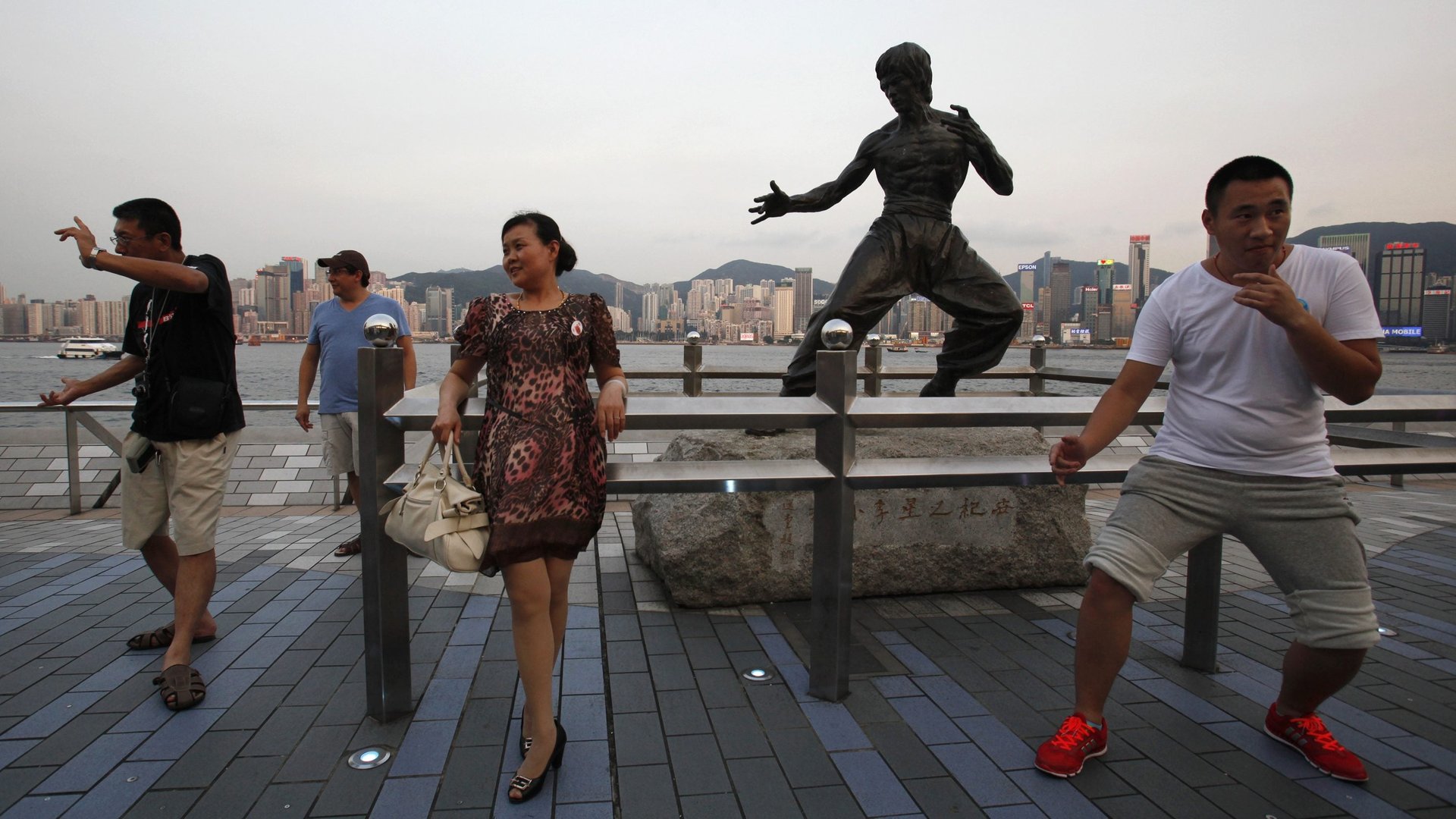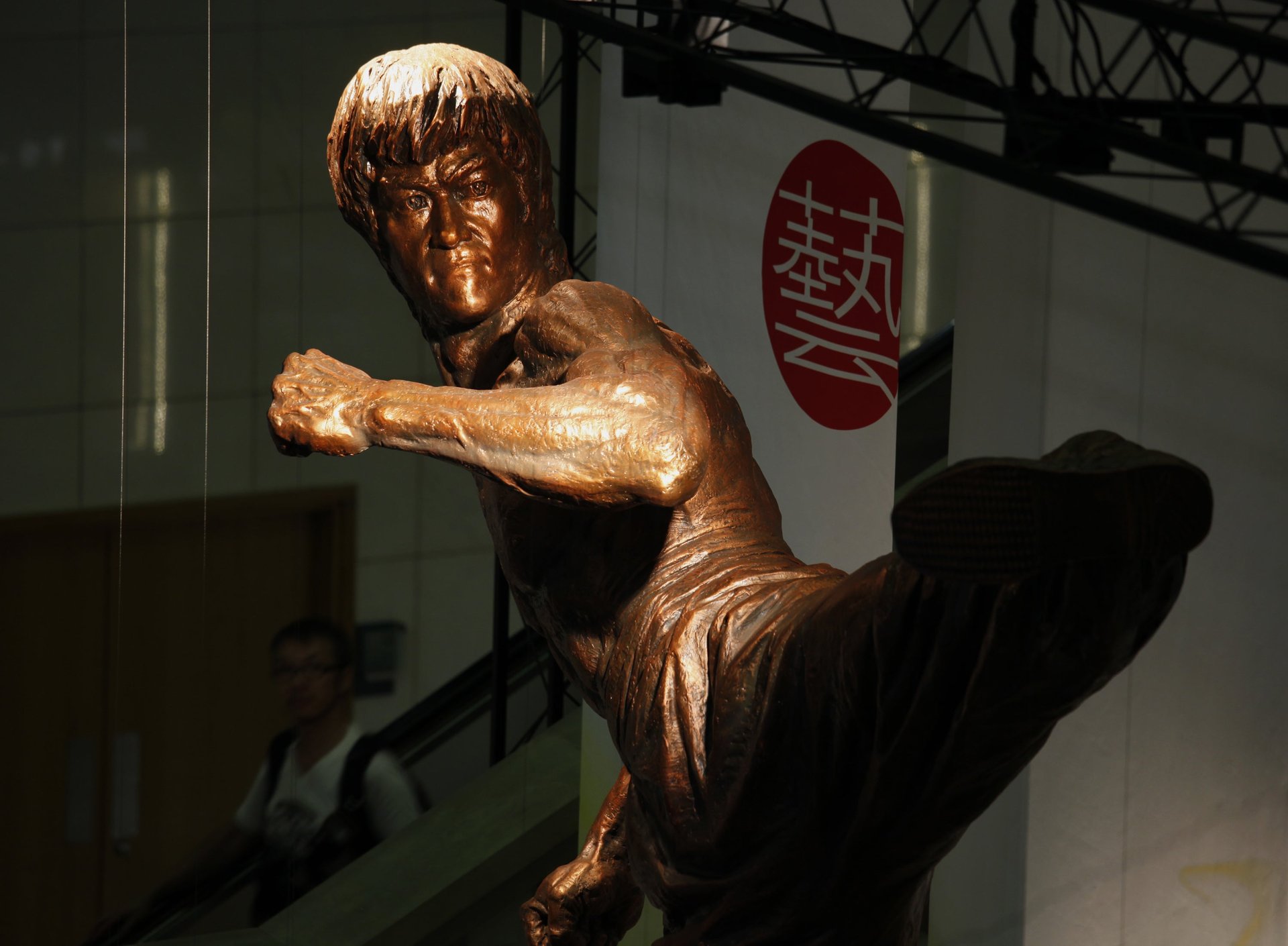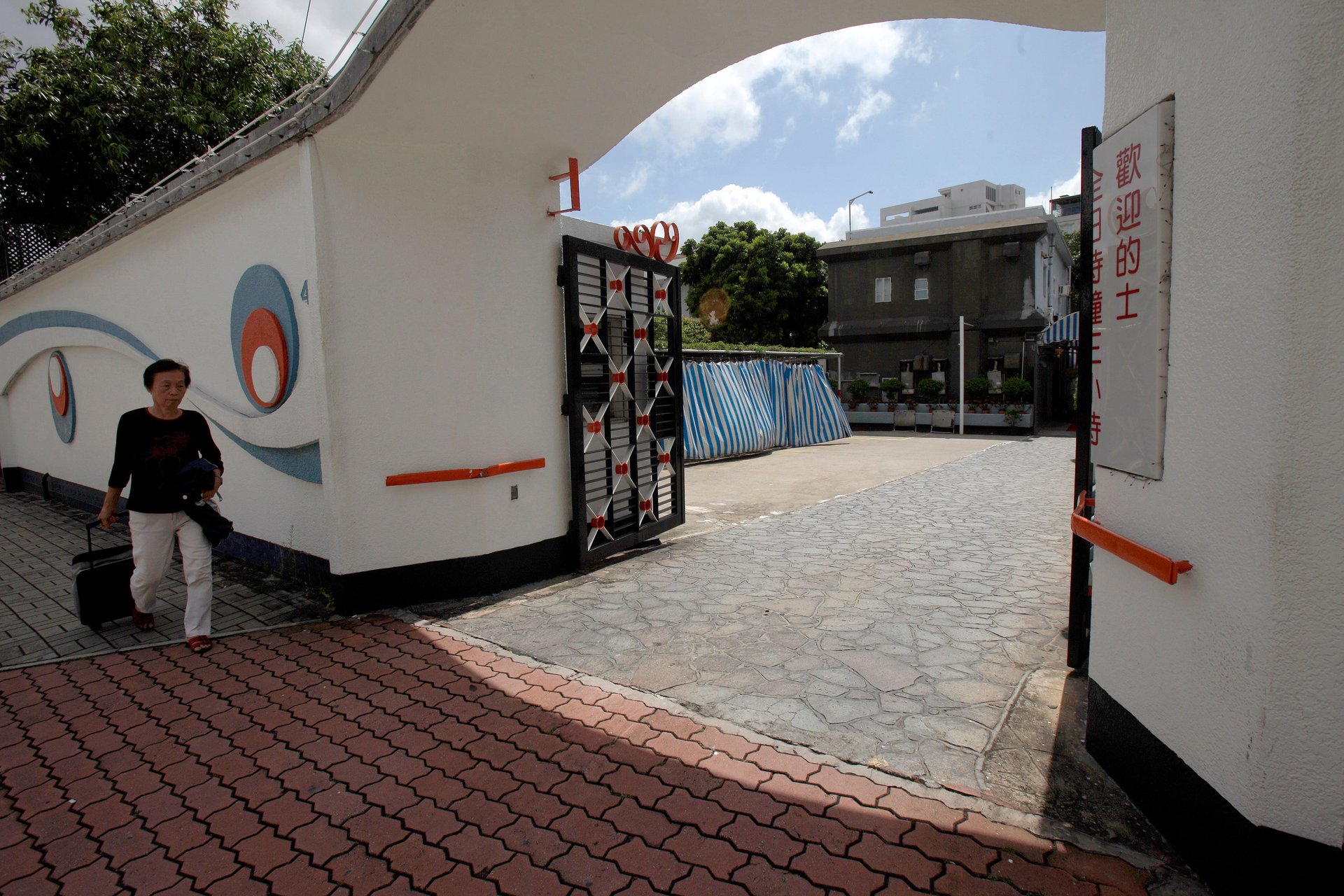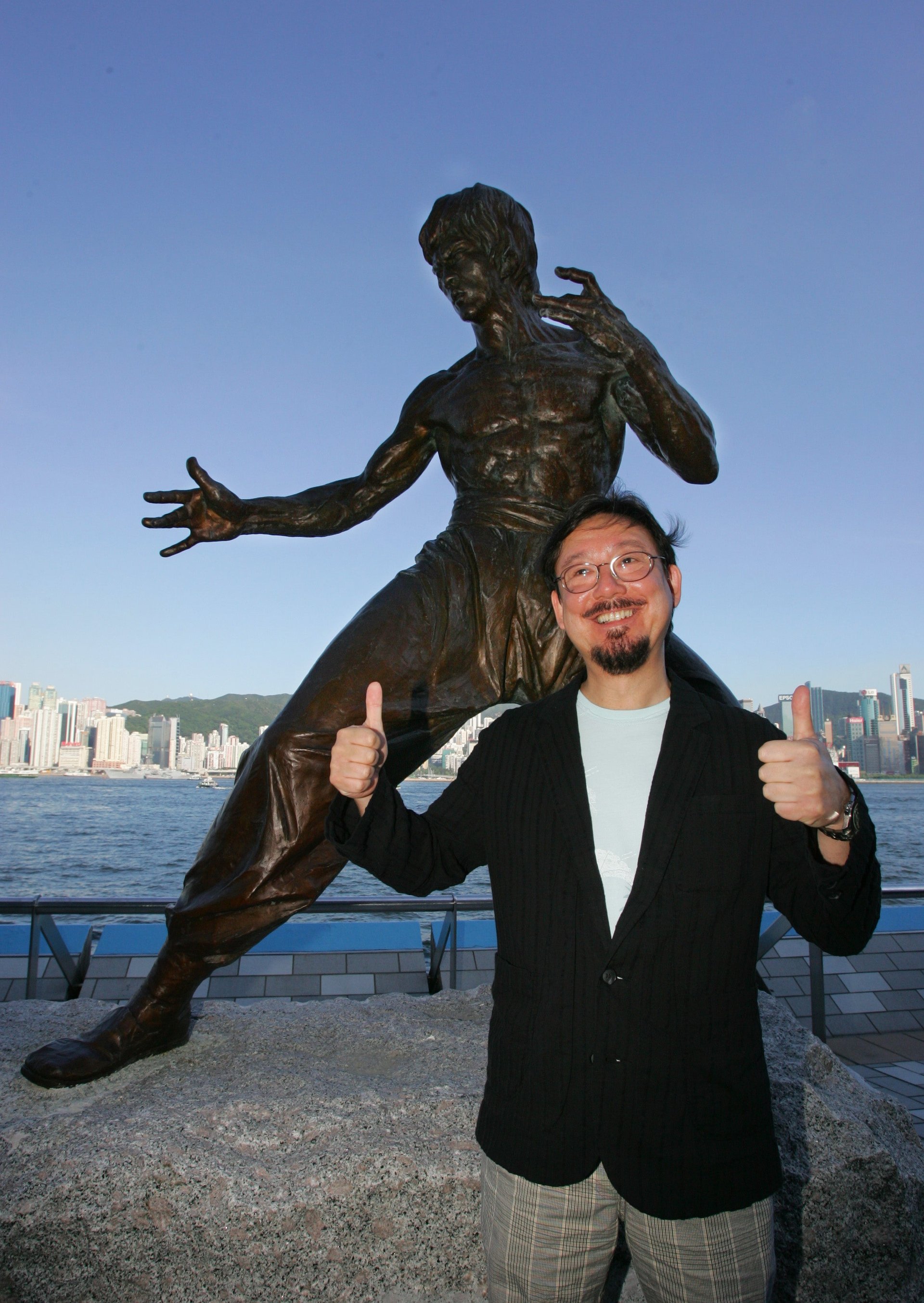Tourists keep looking for Bruce Lee in the one place that can’t seem to remember him
When Bruce Lee was just a few months old, his family moved from San Francisco to Hong Kong’s Kowloon area, where he went to school, got into scraps, and began training in martial arts. Yet traces of the legendary fighter and movie star in the city are surprisingly rare, and the city’s most significant homage to him might soon be gone.


When Bruce Lee was just a few months old, his family moved from San Francisco to Hong Kong’s Kowloon area, where he went to school, got into scraps, and began training in martial arts. Yet traces of the legendary fighter and movie star in the city are surprisingly rare, and the city’s most significant homage to him might soon be gone.
Efforts to create a Bruce Lee museum have never gotten off the ground, but in the last few years, visiting fans seeking to commune with their idol have been able to do that at Bruce Lee: Kung Fu ‧ Art ‧ Life, an exhibition at Hong Kong’s Heritage Museum slated to close July 2018.
Critics of the city’s lack of a permanent homage to Lee say this is the time to put fresh efforts into building a museum for the star, who still has a massive global following decades after his unexpected death at the age of 32.
If the show closes as planned or goes on tour—a possibility his daughter Shannon Lee told Quartz she is considering—tourists looking for Bruce Lee in Hong Kong will have to content themselves with gazing at this statue (below), or this waxwork figure of him at Hong Kong’s Madame Tussaud’s.

The end of the Hong Kong Bruce Lee exhibition
The Heritage Museum exhibit opened in 2013, 40 years after the death of the Enter the Dragon star and founder of Jeet Kune Do, a system of martial arts and philosophy. It was a joint effort between the city’s Leisure and Cultural Services Department, which runs the public museums of Hong Kong, and the Bruce Lee Foundation, headed by daughter Shannon Lee.
The show highlights more than 600 exhibits ranging from school photos and enrollment records, to drawings and diaries of the San Francisco-born icon, to a choreography notebook that lists “cha cha fancy steps.” Around 400 exhibits chronicling the life of the kung fu legend were provided on loan by the foundation, founded in 2002 by his wife Linda Lee Caldwell and his daughter. The rest came from individual collectors. These include costumes and props from movie sets for some of the star’s most famous titles, including Game of Death, in production when Bruce Lee suddenly died.
The Leisure and Cultural Services Department said the exhibition has had more than 2 million visitors since its inception, and the department is exploring the possibility of extending the show with the foundation.
But the foundation might have other thoughts. Shannon Lee, who recently approved a new biopic of her father, told Quartz in an email that a decision regarding the future of the exhibition is yet to be made. She said she was open to extending the show but taking the show to other destinations is also a possibility. “We are about to enter into discussions with the Heritage Museum about the exhibition,” she said.
Meanwhile, the foundation is working on building a Bruce Lee Action Museum in Seattle where the star met his future wife, had a family, opened a martial arts school and is buried.

The “love hotel” that never became a Bruce Lee Museum
There could’ve a museum in Hong Kong too, only the plan was scrapped. Before his death, Bruce Lee lived for a while at a house on 41 Cumberland Road, in the city’s Kowloon Tong district.
In 2008, real estate billionaire Yu Panglin, who had bought the house in 1974, agreed to donate the property, affectionately known as The Crane’s Nest by the Lee family, to the government. Over the years it had become a motel frequented by couples. The move was hailed by the Hong Kong tourism board, Reuters reported at the time, and the government launched a competition asking people to submit their ideas for restoring the home.
But by 2011, the government abandoned the effort after it failed to agree on the terms of the donation with Yu. The businessman’s demands to expand the floor space in order to build a larger museum would have breached land regulations.
Instead, the government put its efforts towards the exhibition staged at the Heritage Museum instead as a form of compensation to the people of Hong Kong.
Wong Yiu-keung, chairman and founder of the fan group the Bruce Lee Club established in 2000 said Hong Kong should now revisit the original museum plan. “I’m sure most people in Hong Kong would agree that we should have a museum dedicated to Bruce Lee,” he said, calling it “long overdue.”
But that looks harder than ever, at least at the Crane’s Nest site, after Yu died in 2015. Since then, Yu’s family has been embroiled in a legal dispute over the ownership of his estates.
A D-I-Y Bruce Lee experience

Meanwhile, another option has vanished. The Bruce Lee Club used to run a small shop offering memorabilia and souvenirs in Yau Ma Tei district as a treat for fans visiting from overseas. But the shop closed last September due to skyrocketing rent.
“This is really pathetic,” said Wong. “Perhaps after the end of the exhibition, the only place fans can go is the bronze statue in Tsim Sha Tsui.”
The statue, funded by the fan club and modeled after a pose from the classic Fist of Fury, was erected near the Tsim Sha Tsui harbor in 2005. It was moved to the nearby Garden of Stars in 2015 due to construction work on the original site.
For now, visitors to Hong Kong looking for Bruce Lee better follow the example of die-hard fans who curate their own experiences.
“The Bruce Lee Way,” a walking trail planned by the Bruce Lee Club, highlights six locations connected to the legacy of the late star.
These include the La Salle Primary School and St. Francis Xavier’s College—the two schools he attended; a toilet in West Kowloon where Lee’s skills were first recognized when a teacher caught him fighting inside; Ocean Terminal, where a set of photos of Lee were taken for film studio Golden Harvest; Tsing Shan Monastery, where Enter The Dragon was shot; and Tsim Sha Tsui’s Bruce Lee statue.
Fans can also explore Kom Tong Hall, in the city’s Mid-Levels area, once owned by a prominent businessman who was a manager at opium-and-tea trading firm Jardines as well as being Bruce Lee’s grandfather, or take a few cues from the web site Bruce Lee Was Here. But as for the home he lived at when he was very young, the Katherine Building on Nathan Road, the Prudential Centre apparently now stands on its former site.
Wong, of the fan club, said the government should negotiate with the heirs to the Crane’s Nest, which is at risk of being sold to a developer who might demolish the home.
“We should learn our lessons and figure out a permanent plan that can keep Bruce Lee’s legacy alive in Hong Kong,” said Wong.